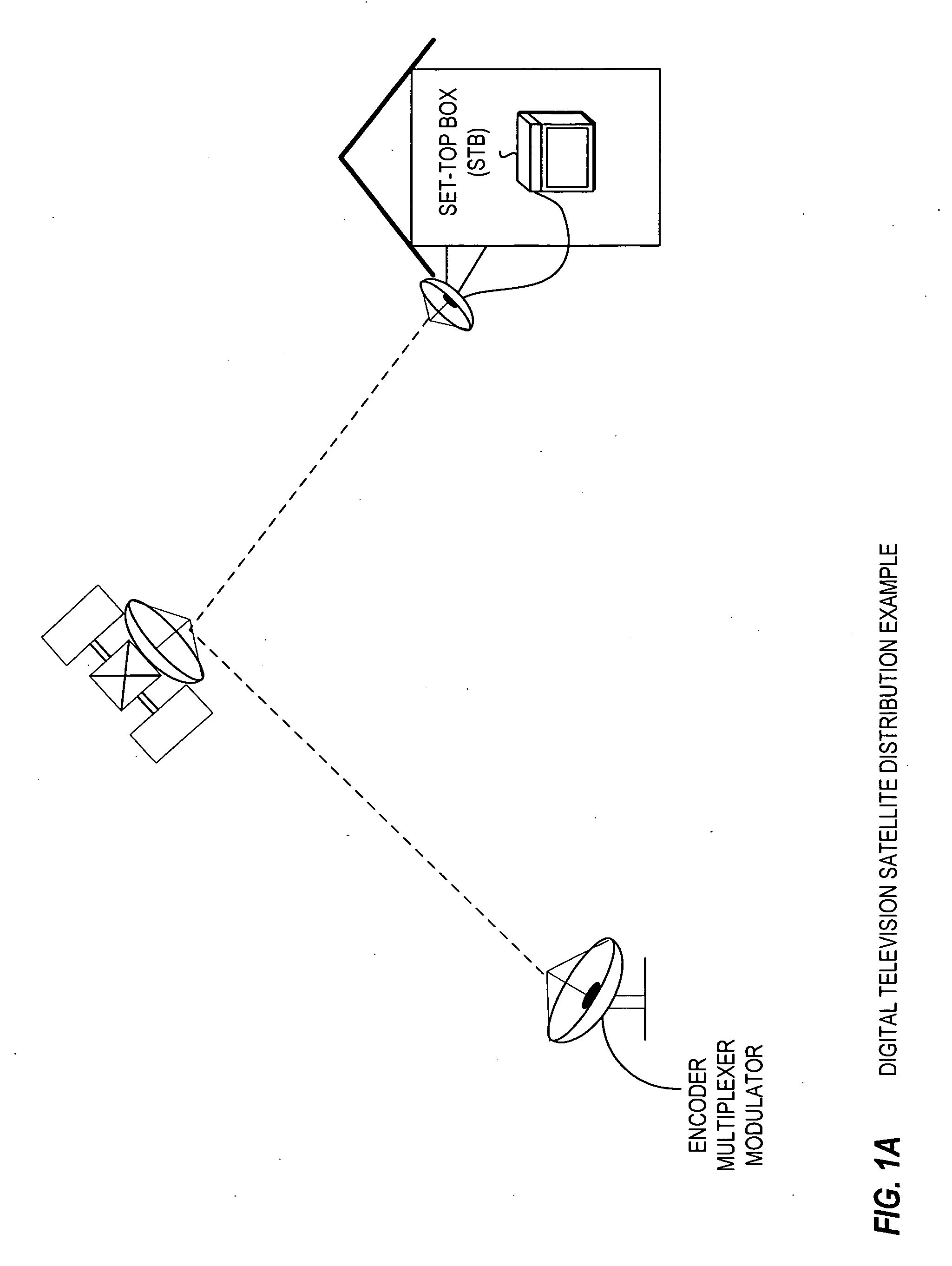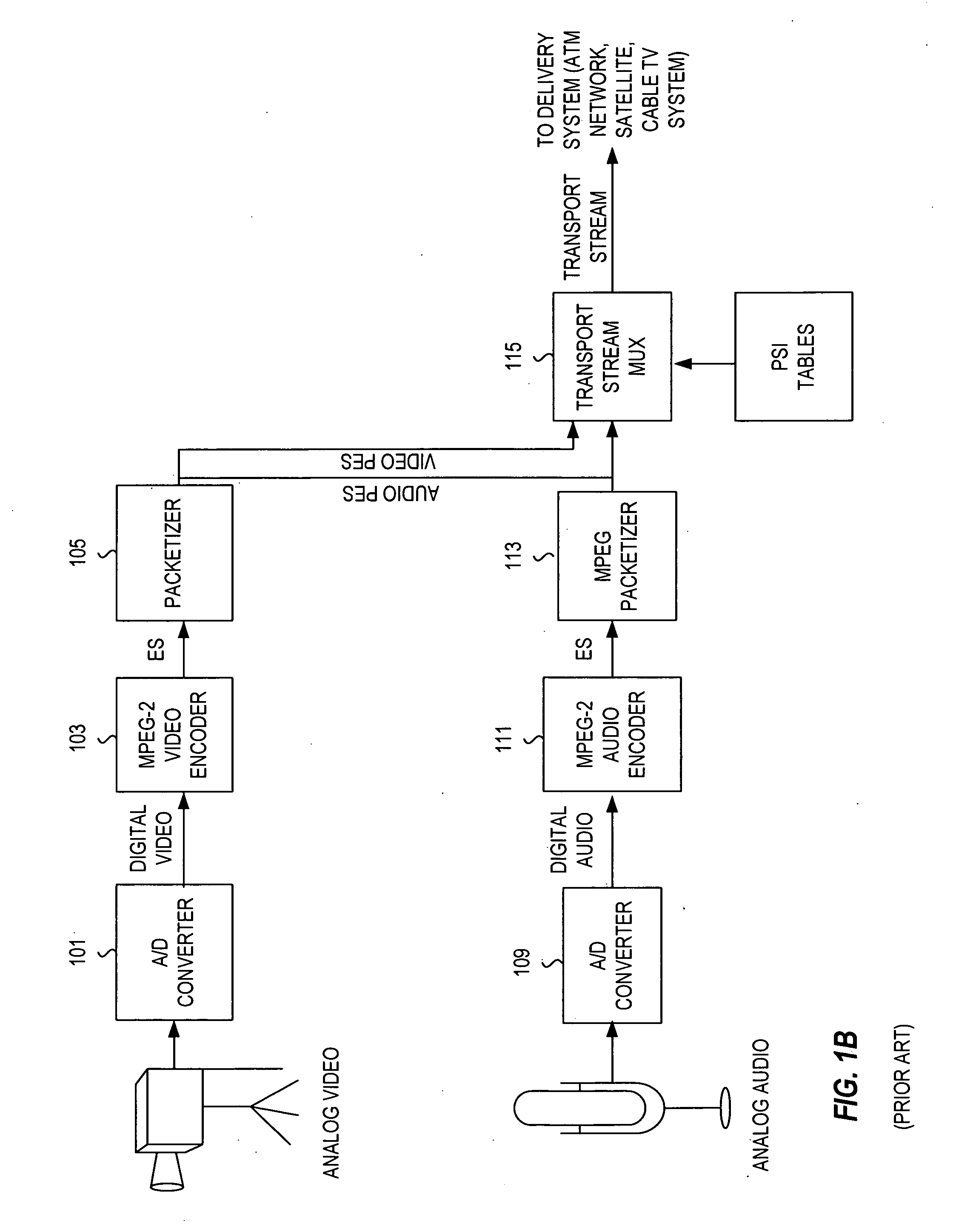Inserting local signals during channel changes
a local signal and channel technology, applied in the direction of electrical cable transmission adaptation, digital non-picture data transmission, analog secracy/subscription systems, etc., can solve the problems of significant delay in displaying the desired program to the viewer, change delay is somewhat waste of resources, and is particularly noticeable and annoying. , to achieve the effect of improving compression efficiency and slow channel surfing
- Summary
- Abstract
- Description
- Claims
- Application Information
AI Technical Summary
Benefits of technology
Problems solved by technology
Method used
Image
Examples
Embodiment Construction
[0031] In describing a preferred embodiment of the invention illustrated in the drawings, specific terminology will be used for the sake of clarity. However, the invention is not intended to be limited to the specific terms so selected, and it is to be understood that each specific term includes all technical equivalents which operate in a similar manner to accomplish a similar purpose.
[0032] With reference to the drawings, in general, and FIGS. 3 through 6 in particular, the apparatus of the present invention is disclosed.
[0033]FIGS. 4 and 5 illustrate an overview of some of the important processes entailed in the extraction, decoding and presentation of a particular program, at the set-top receiver, of an MPEG-2 transport stream according to one embodiment of the present invention. As illustrated in FIG. 4, the transport stream 436 is “demuxed” by a transport demultiplexer 442 (which includes a clock extraction mechanism), unpacketized by a depacketizer 450, and sent for audio a...
PUM
 Login to View More
Login to View More Abstract
Description
Claims
Application Information
 Login to View More
Login to View More - R&D
- Intellectual Property
- Life Sciences
- Materials
- Tech Scout
- Unparalleled Data Quality
- Higher Quality Content
- 60% Fewer Hallucinations
Browse by: Latest US Patents, China's latest patents, Technical Efficacy Thesaurus, Application Domain, Technology Topic, Popular Technical Reports.
© 2025 PatSnap. All rights reserved.Legal|Privacy policy|Modern Slavery Act Transparency Statement|Sitemap|About US| Contact US: help@patsnap.com



